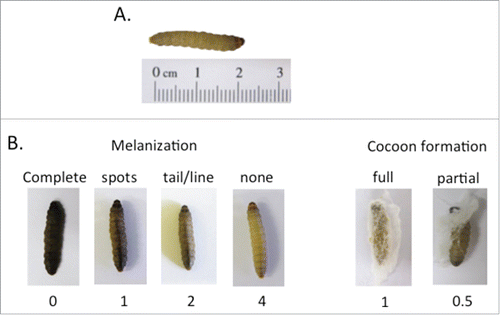Figures & data
Table 1. Components of the G. mellonella innate immune response.
Figure 1. Photographic images of G. mellonella larvae. A: Image of a healthy G. mellonella last instar larvae with a typical creamy color and a size of 2 to 2.5 cm. B: Images of infected larvae showing different stages of disease. Melanization, which comprises the synthesis and deposition of melanin to encapsulate pathogens at the wound site followed by hemolymph coagulation and opsonization typically starts with distinctive black spots on the cream colored larvae (third image from left). Complete melanization (black larvae, left image) correlates with death of the larvae soon after. A decrease in cocoon formation can also be used as a marker for disease in G. mellonella larvae (right image) The numbers on the bottom of Fig. 1B are the health index scores (see also ).

Table 2. The G. mellonella Health Index Scoring System.Citation49
